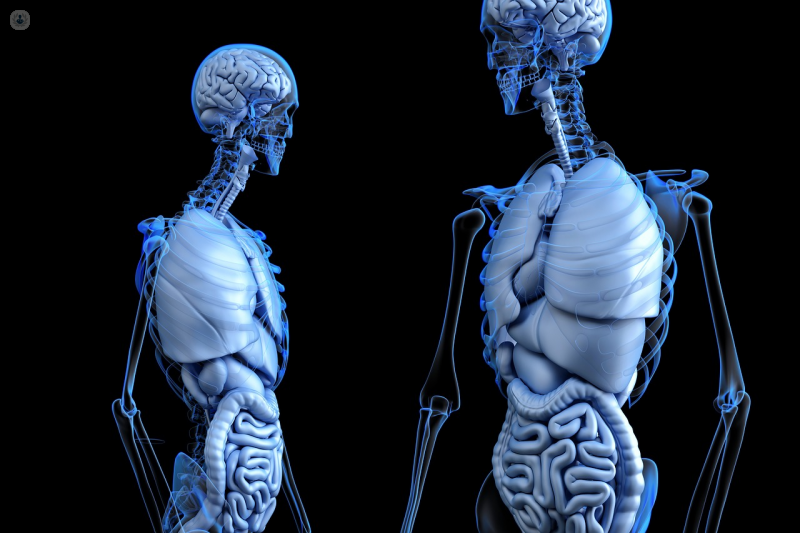Anatomy
Mr Paul Carter - Obstetrics & gynaecology
Created on: 09-29-2017
Updated on: 04-27-2023
Edited by: Conor Lynch
What is anatomy?
Anatomy is the structure of the human body. It looks at the organs and tissues which make up the body, how they are positioned, their size, and how they relate to one another. Anatomy can be distinguished from physiology, which is the study of the functions of different parts of the body. However, medical students often study both interchangeably.

Anatomy can be divided into two types, corresponding to the methods involved:
- Gross anatomy – this is the study of organs and tissues which are visible to the naked eye. Examination is primarily achieved through dissection, but can also involve non-invasive methods such as endoscopy (inserting a tube into the body with a camera at the end). Students of gross anatomy tend to look at the body on a system level: observing major organs such as the heart and lungs, and the key blood vessels and nerves which link them together.
- Microscopic anatomy – this is the study of the body on a cellular level, invisible to the naked eye but examinable through a microscope. Tissue may first need to be cut into very thin slices to be seen through a microscope – this is known as histology.
Why is the study of anatomy important in medicine?
Anatomy is one of the basic sciences studied by medical students and the most important in clinical application. Knowledge of the organs, tissues, and cells which make up the body is essential for:
- Explaining to a patient an injury or illness to help them understand why a treatment is being recommended
- Performing a physical examination of a patient or an endoscopy
- Performing any kind of surgery or otherwise invasive procedure safely
- Interpreting the images on an X-ray, CT scan or MRI scan
- Designing prosthetics or devices which regulate or replicate our body’s functions, such as a pacemaker or dialysis machine
- Conducting autopsies and explaining unexpected death by detecting pathologies on a cellular level
